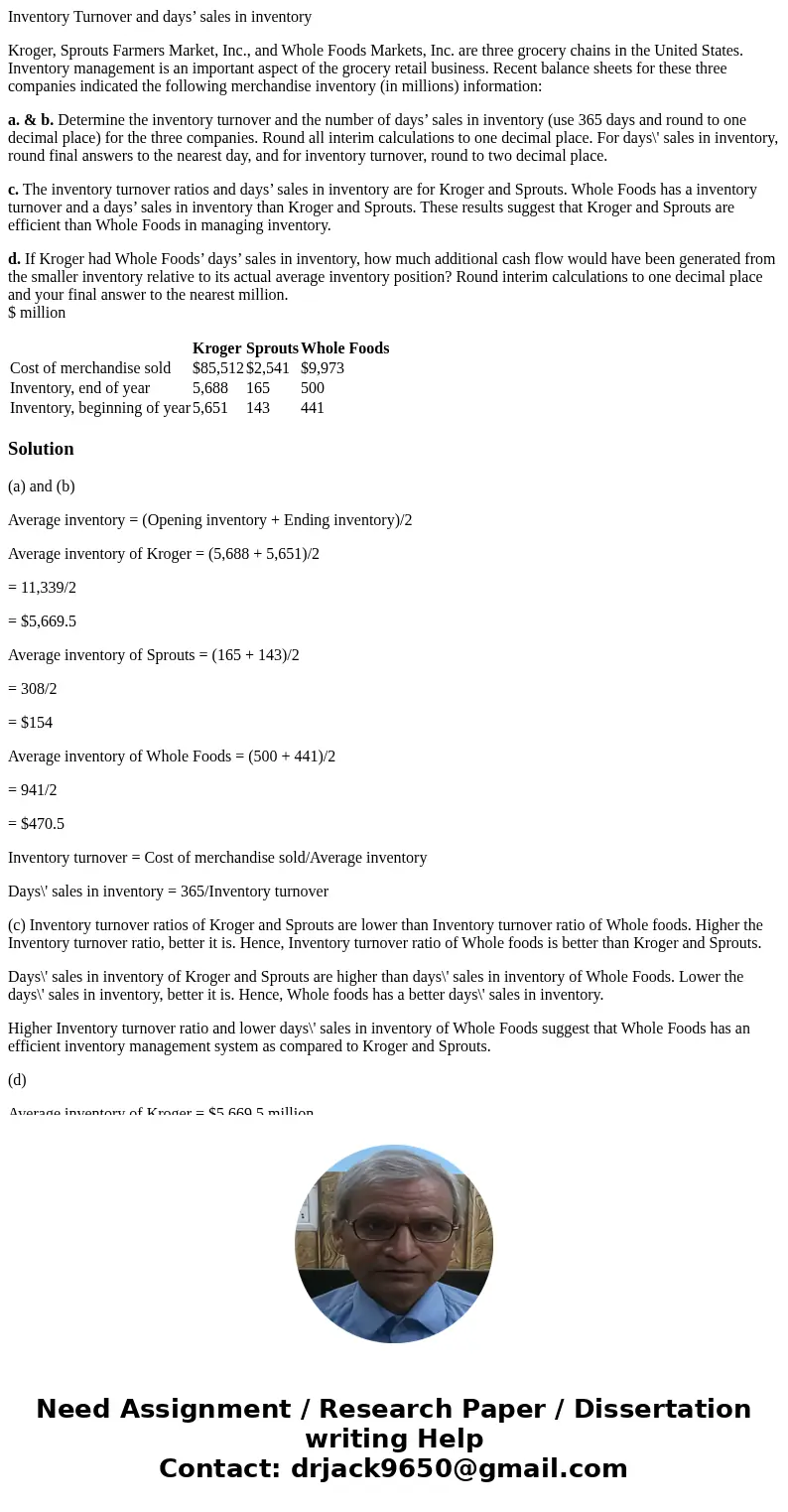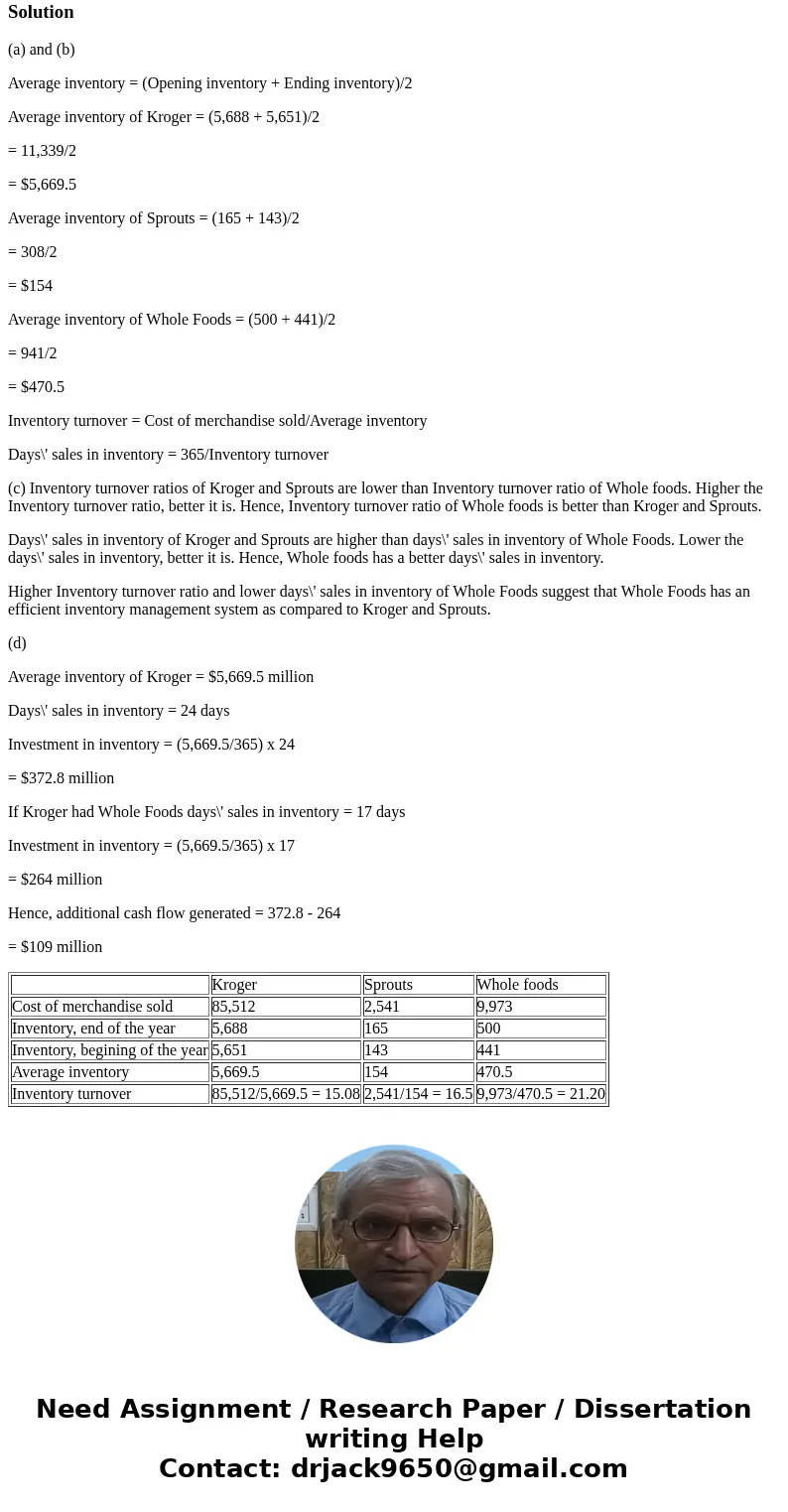Inventory Turnover and days sales in inventory Kroger Sprout
Inventory Turnover and days’ sales in inventory
Kroger, Sprouts Farmers Market, Inc., and Whole Foods Markets, Inc. are three grocery chains in the United States. Inventory management is an important aspect of the grocery retail business. Recent balance sheets for these three companies indicated the following merchandise inventory (in millions) information:
a. & b. Determine the inventory turnover and the number of days’ sales in inventory (use 365 days and round to one decimal place) for the three companies. Round all interim calculations to one decimal place. For days\' sales in inventory, round final answers to the nearest day, and for inventory turnover, round to two decimal place.
c. The inventory turnover ratios and days’ sales in inventory are for Kroger and Sprouts. Whole Foods has a inventory turnover and a days’ sales in inventory than Kroger and Sprouts. These results suggest that Kroger and Sprouts are efficient than Whole Foods in managing inventory.
d. If Kroger had Whole Foods’ days’ sales in inventory, how much additional cash flow would have been generated from the smaller inventory relative to its actual average inventory position? Round interim calculations to one decimal place and your final answer to the nearest million.
$ million
| Kroger | Sprouts | Whole Foods | |
| Cost of merchandise sold | $85,512 | $2,541 | $9,973 |
| Inventory, end of year | 5,688 | 165 | 500 |
| Inventory, beginning of year | 5,651 | 143 | 441 |
Solution
(a) and (b)
Average inventory = (Opening inventory + Ending inventory)/2
Average inventory of Kroger = (5,688 + 5,651)/2
= 11,339/2
= $5,669.5
Average inventory of Sprouts = (165 + 143)/2
= 308/2
= $154
Average inventory of Whole Foods = (500 + 441)/2
= 941/2
= $470.5
Inventory turnover = Cost of merchandise sold/Average inventory
Days\' sales in inventory = 365/Inventory turnover
(c) Inventory turnover ratios of Kroger and Sprouts are lower than Inventory turnover ratio of Whole foods. Higher the Inventory turnover ratio, better it is. Hence, Inventory turnover ratio of Whole foods is better than Kroger and Sprouts.
Days\' sales in inventory of Kroger and Sprouts are higher than days\' sales in inventory of Whole Foods. Lower the days\' sales in inventory, better it is. Hence, Whole foods has a better days\' sales in inventory.
Higher Inventory turnover ratio and lower days\' sales in inventory of Whole Foods suggest that Whole Foods has an efficient inventory management system as compared to Kroger and Sprouts.
(d)
Average inventory of Kroger = $5,669.5 million
Days\' sales in inventory = 24 days
Investment in inventory = (5,669.5/365) x 24
= $372.8 million
If Kroger had Whole Foods days\' sales in inventory = 17 days
Investment in inventory = (5,669.5/365) x 17
= $264 million
Hence, additional cash flow generated = 372.8 - 264
= $109 million
| Kroger | Sprouts | Whole foods | |
| Cost of merchandise sold | 85,512 | 2,541 | 9,973 |
| Inventory, end of the year | 5,688 | 165 | 500 |
| Inventory, begining of the year | 5,651 | 143 | 441 |
| Average inventory | 5,669.5 | 154 | 470.5 |
| Inventory turnover | 85,512/5,669.5 = 15.08 | 2,541/154 = 16.5 | 9,973/470.5 = 21.20 |


 Homework Sourse
Homework Sourse